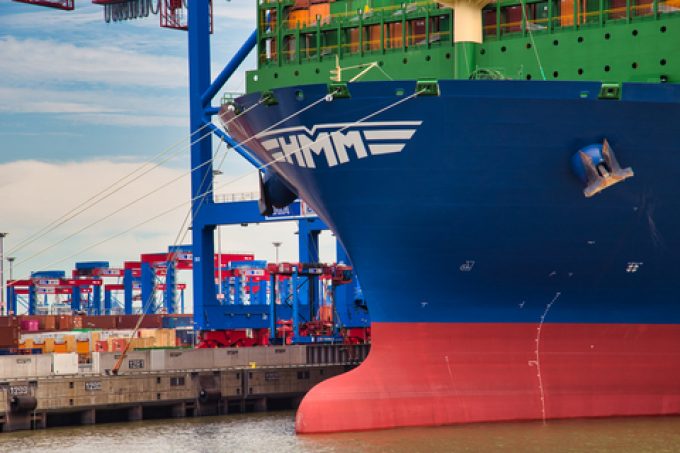Zemba gets things moving, as Hapag-Lloyd signs up for 'greener' shipping
Proving to be more than just idle talk, the Zero-Emission Maritime Buyers’ Alliance (Zemba) has ...

HMM has bucked the negative trend of its peers by managing to stay in the black in Q4 last year, and has shrugged off the collapse of its sale to Harim Group.
Harim walked away from a deal to buy a 57.9% stake in the South Korean ocean carrier from its state owners, Korea Development Bank (KDB) and Korea Ocean Business Corp (KOBC), after failing to come to terms by the 6 February deadline.
In a bullish statement to accompany its Q4 preliminary results, HMM said that, “regardless of the recent sale process”, it was “making great efforts to enhance its business capability”, including taking delivery of 12 13,000 teu vessels this year which will push its fleet capacity to over 1m teu.
In Q4 23, HMM’s revenue fell 41% on the same period of 2022, to KRW2,063bn ($1.55bn), for an ebit of KRW43bn ($32m) and a net profit of KRW301bn ($230m).
This compares favourably with THE Alliance partner ONE, which reported an ebit loss of $248m for the quarter, and outgoing partner Hapag-Lloyd’s preliminary ebit loss of $3m.
HMM did not disclose its volumes, so it is not possible to calculate the average rate per teu of its liftings, but clearly South Korea’s flagship carrier managed to achieve above-breakeven freight rates during the quarter.
The carrier’s revenue for the full year was KRW8,401bn ($6.3bn), for an operating profit of KRW585bn ($440m) and a net profit of KRW1,006bn ($750m), compared with KRW10,117bn ($7.7bn) for 2022.
HMM said: “Overall, the slowdown in demand and the influx of new containerships led to the normalisation of the container shipping market, putting freight rates in key trades under downward pressure during 2023.”
In terms of the outlook, HMM advised that “disruptions in the Red Sea region are still under way and a severe drought in the Panama Canal is restricting vessel transits”, which it said was leading to “widespread uncertainty and market volatility”.
Meanwhile, Alphaliner speculated that any further plans by the South Korean government to privatise HMM could have become more difficult due to recent events.
“A sale is further complicated by the rate declines expected when the Middle East crisis is resolved, and by the fallout from Hapag-Lloyd’s departure from THE Alliance,” said the consultant.
Nevertheless, HMM’s management is pushing ahead with its expansion plans, and this week took delivery of the first of a series of six 13,600 teu newbuild neo-panamax vessels, the scrubber-fitted HMM Garnet, which will be phased into the Asia-US east coast EC1 service, operated by HMM, ONE and Hapag-Lloyd in THE Alliance network.
According to Alphaliner data, HMM’s current fleet consists of 71 ships, of which 33 are chartered-in, for a nominal capacity of 797,327 teu, and it is ranked eighth in the carrier rankings, ahead of THEA founding member Yang Ming. The carrier also has an impressive orderbook, of 25 vessels with a capacity of 251,427 teu.
During the Red Sea crisis HMM has deployed extra loaders from Asia to North Europe and Asia to the Mediterranean as standalone services outside THEA.
After the departure of Hapag-Lloyd next year, it seems unlikely that the considerably weaker THEA could compete with MSC, the Ocean Alliance and the new Gemini Cooperation of Maersk and Hapag without recruiting another partner.
Comment on this article